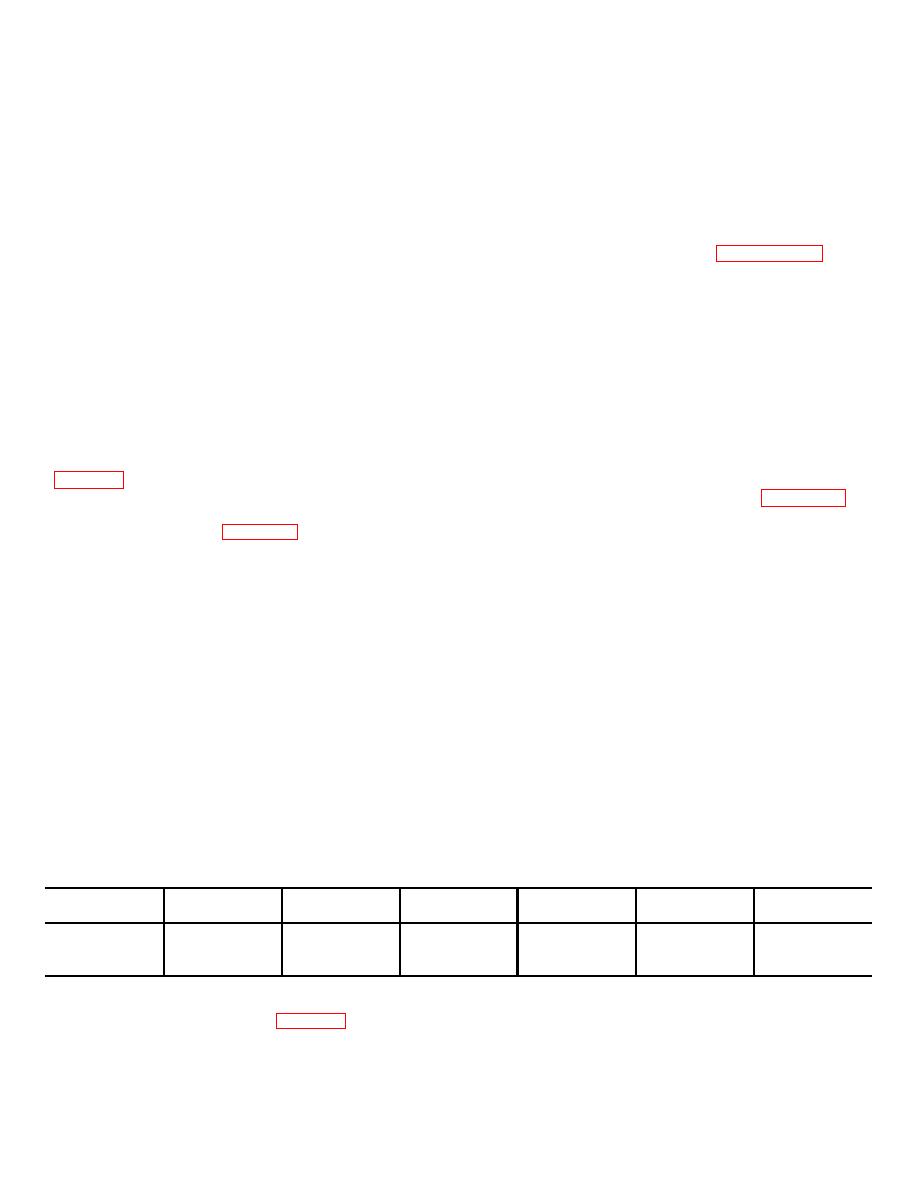
TM 55-203
(4) Replace all gaskets and diaphragms that
any more material than is necessary to obtain a clean
have broken or flattened beads, cracks, swelling, or cuts
surface The chamfer must be held to a 45 angle to
on diaphragm sealing surfaces. Coat all gaskets and
insure proper fit and tightness of vent protector.
diaphragms with dry graphite before replacing.
(d) When the vent valve piston and the
(5) Inspect wasp excluder for defects. Clean
inshot valve piston are assembled to the body, place
wire mesh with compressed air.
Renew if found
two drops of oil in the piston ring groove. Rotate the ring
defective.
in the groove to distribute the oil. Insert the piston in the
d. Reassembly.
Refer to figure 8-26, and
body and then evenly spread three drops of oil around
the piston bush. Move the piston back and forth several
reassemble the parts as illustrated. Tighten nuts and
times and then remove the surplus oil from the outer
capscrews evenly, but not excessively to cause
edge of the cylinder.
distortion of covers and gaskets.
(4) Performance of code of tests.
Install
reconditioned valve portion on test rack and perform
8-17.
Shop Maintenance of A-2-A Quick-Service
code of tests in accordance with instructions in TM 55-
Valve
2006.
a. General
8-16. Shop Maintenance of AB-1-B Control Valve
(1) The A-2-A quick-service valve consists of a
pipe bracket and valve portion. The brake pipe strainer
a. General. Maintenance of the AB-1-B Con-
used in the pipe bracket is identical to the strainer used
trol Valve is the same as the AB Control Valve
in AB control valve pipe bracket.
(2) Three springs and one choke are used in
piece with selector valve portion, located between
the valve portion. They are identified in figure 8-27 by
the emergency portion and the pipe bracket.
reference numbers as follows:
(a) Choke (3) with filter controls the
assemble the parts as illustrated. Use extreme
charging of the quick-service volume reservoir. It is
care when dismantling the parts to avoid mutila-
located in the valve portion body under the strut
tion or damage to springs, gaskets, diaphragms,
diaphragm cover. Attached to the choke plug is a filter
seals, and like items.
felt which prevents restriction of the choke by very fine
c. Cleaning and Inspection
dirt, thereby insuring the proper charging rate of the
quick-service volume reservoir. Orifice size No. 73
(1) Wash all parts in a suitable solvent that will
drill.
remove oil and grease. Do not allow gaskets and
(b) Spring (11) holds the piston slide valve
rubber-seated valves to soak in the cleaning fluid.
to its seat.
(2) Inspect valves and valve seats for wear
(c) Check valve spring (10) seats the cutoff
pitting or scoring. Recondition or renew as required.
valve check valve.
(3) Check springs for rust pits, distortion,
(d) Diaphragm follower spring (8) seats the
breaks, cracks, and permanent set. The springs should
diaphragm follower.
have a free height of 1 1/2 inches
(e) The following tabulation gives the data
necessary to identify each of the springs described.
.
Table 8-3. Spring Identification A-2-A Quick-Service Valve
Approximate
Approximate
Approximate
Approximate
Reference No.
Part No
. O. D.
diameter wire
free height.
No turns
Material
11
A94839
11/16"
.065"
1 1/8"
6 1/2
Ph Bronze
10
A513914
11/16"
.072"
1 1/16"
8
Steel
8
A513913
1 5/32"
.072"
1 15/16"
7
Steel
b. Disassembly
can now be readily removed from the valve body. Take
care to avoid distortion or damage to parts with respect
(1) Remove nuts (24) (fig 8-27) from strut
to piston springs, gaskets, diaphragms, slide valve, and
diaphragm cover (22) and remove cover.
like items.
(2) Remove slide valve strut (23), piston (14),
and slide valve (16). The remaining operating portions
8-30



 Previous Page
Previous Page
